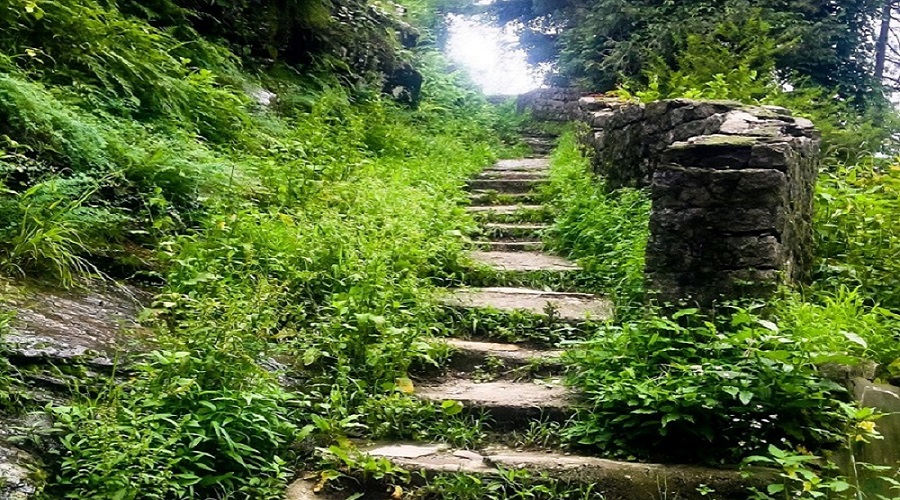Jagannath Rath Yatra 2025 Guide – A Pilgrim’s Guide to India’s Grandest Chariot Festival
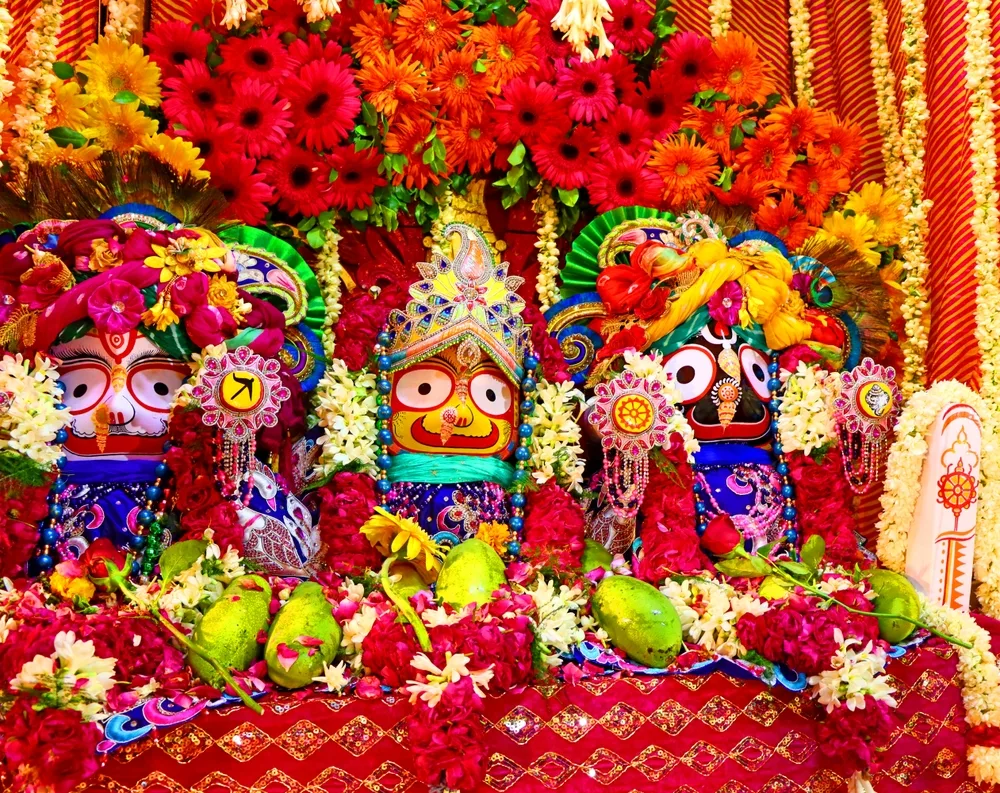
What is Jagannath Rath Yatra and Why is it Celebrated?
The Jagannath Rath Yatra, also known as the Chariot Festival, is one of the most revered and ancient religious festivals in India. It takes place annually in the sacred town of Puri, Odisha, and honors the journey of Lord Jagannath a form of Lord Krishna alongside his siblings Balabhadra (Balarama) and Subhadra. The festival holds profound religious, cultural, and social significance, symbolizing unity, inclusivity, and divine love.
Traditionally rooted in the Skanda Purana, this grand yatra marks the deities’ ceremonial journey from the Jagannath Temple to the Gundicha Temple, believed to be the home of their aunt. The journey, covering approximately 3 kilometers, is undertaken in three enormous, colorfully decorated wooden chariots pulled by thousands of devotees. The act of pulling the chariots is considered supremely auspicious, believed to cleanse sins and grant moksha (liberation).
The Rath Yatra is unique because it allows all devotees including those typically barred from temple entry – to have a direct darshan (viewing) of the deities, as they come out of the sanctum onto the streets. The festival transcends caste, creed, and nationality, attracting millions of pilgrims and tourists globally, including international ISKCON followers who celebrate the yatra in cities such as New York, London, and Melbourne.
Its global appeal and spiritual magnetism have made the Rath Yatra not only a religious occasion but also a profound expression of India’s living heritage, devotion, and unity in diversity.
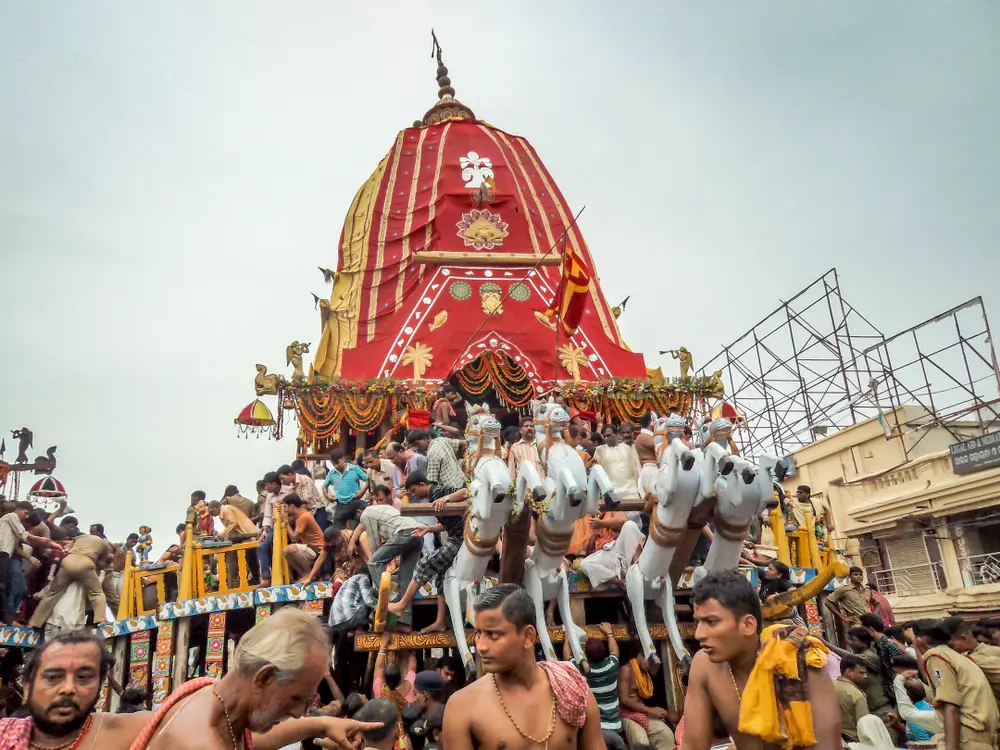
Jagannath Rath Yatra 2025 Date & Schedule
| Event | Date (2025) | Description |
|---|---|---|
| Snana Purnima | June 11 | Holy bathing of deities with 108 water pots, marks start of Anavasara period |
| Anavasara | June 11–25 | Deities rest for 15 days, public darshan is suspended. Devotees visit Alarnath Temple |
| Gundicha Marjana | June 26 | Temple cleansing day—devotees clean Gundicha Temple |
| Rath Yatra | June 27 (Friday) | Main chariot procession; deities journey from Jagannath to Gundicha Temple |
| Stay at Gundicha | June 27 – July 3 | Deities reside at Gundicha Temple |
| Hera Panchami | July 1 | Goddess Lakshmi symbolically searches for Lord Jagannath |
| Bahuda Yatra | July 4 | Return chariot procession to Jagannath Temple |
| Suna Besha | July 5 | Lord Jagannath, Balabhadra & Subhadra adorned in gold attire |
| Niladri Bijaya | July 5 | Final ritual—Lord Jagannath re-enters his sanctum |
1. Snana Purnima (Deva Snana Yatra)
- Date: Wednesday, June 11, 2025
- Timings: Purnima Tithi from ~11:36 AM on June 10 to ~1:13 PM on June 11
- Rituals: The idols are ceremonially bathed with 108 pots of holy water (Snana Yatra), after which they fall into a symbolic “fever” period known as Anavasara
2. Anavasara (Anasara)
- Dates: June 11 to June 25, 2025 – a 15-day seclusion period
- Rituals: Deities receive Ayurvedic healing; devotees visit Alarnath Temple at nearby Brahmagiri to pay respects
3. Gundicha Marjana (Temple Cleaning)
- Date: June 26, 2025, the eve of Rath Yatra
- Rituals: Volunteer devotees and priests thoroughly clean the Gundicha Temple – the temporary abode where the deities will reside.
4. Main Rath Yatra Day
- Date: Friday, June 27, 2025, falls on Dwitiya Tithi (2nd day of bright half of Ashadha)
Key Ritual Timings on Rath Yatra Day (June 27):
| Time | Ritual/Event |
| 6:00 AM | Mangala Aarti |
| 6:10 AM | Mailam Bhog |
| 6:30 AM | Tadapalagi & Rosha Homa |
| 7:00 AM | Abakasha (temple gates open), followed by Surya Puja |
| 7:30 AM | Dwarapala Puja, deity dressing (Besha Sesha) |
| 8:00–9:00 AM | Gopala Ballava & Sakala Dhupa (offering of khechudi bhog) |
| 9:00 AM | Ratha Pratishtha (deities placed on chariots) |
| 9:15 AM | Mangalarpana (auspicious mixture offering) |
| 9:30 AM | Pahandi Begins (deities move to chariots) |
| 12:30 PM | Pahandi Ends |
| 1:30–2:00 PM | Chita Lagi (chariot fire illumination ritual) |
| 2:30–3:30 PM | Chhera Pahara (king sweeps the chariot path) |
| 4:00 PM | Charamala Phita (flag raising), chariot pulling begins |
5. Stay at Gundicha Temple
- June 27 – July 3, 2025: Deities reside here; devotees continue darshan and rituals.
6. Hera Panchami
- Date: July 1, 2025 – Goddess Lakshmi visits Gundicha Temple in an emotional ritual, symbolizing her search for Lord Jagannath.
7. Bahuda Yatra (Return Journey)
- Date: July 4, 2025 – Deities are carried back from Gundicha to the main temple.
8. Suna Besha & Niladri Bijaya
- Date: July 5, 2025
- Suna Besha: Deities adorned with gold jewelry as they return
- Niladri Bijaya: The grand finale – Lord Jagannath re-enters the main sanctum, concluding the festival
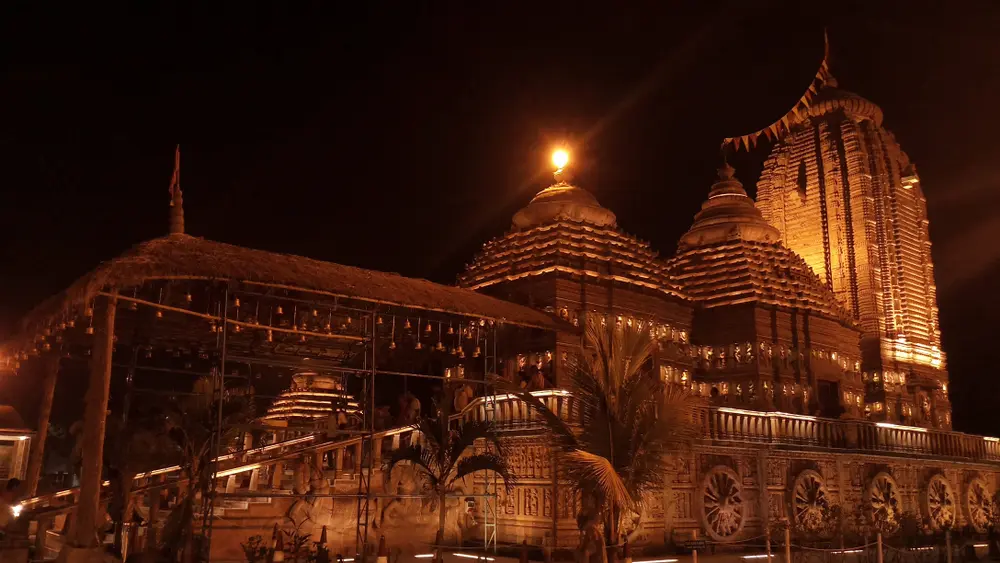
Rituals & Ceremonies to Witness
Snana Purnima
This ritual marks the ceremonial public appearance of Lord Jagannath, Balabhadra, and Subhadra before the Rath Yatra. The deities are bathed with 108 pots of sacred water drawn from the temple well, a ritual meant to purify and invigorate them. Following this elaborate bathing ceremony, the deities are believed to fall ill and hence retire from public view for 15 days in a phase called “Anavasara.” During this time, no public darshan is allowed, enhancing the anticipation for the grand procession.
Chhera Pahara
Performed by the Gajapati King of Puri, Chhera Pahara is a deeply symbolic ritual where the monarch sweeps the chariot decks with a golden broom and sprinkles sandalwood-scented water. This act underscores the principle of humility and equality, signifying that in the eyes of Lord Jagannath, all devotees are equal—whether kings or commoners. This unique tradition reflects the spiritual ethos of Jagannath culture.
Pahandi & Rath Pulling
“Pahandi” refers to the slow, rhythmic procession in which the deities are brought from the temple to their respective chariots. The deities sway gently as they are carried by priests amid chanting, music, and jubilant crowds. Once the deities are mounted on their chariots, the most iconic aspect of the festival begins—the chariot pulling. Devotees from across the world take part in pulling the massive chariots with thick ropes. It is believed that participating in this act washes away sins and grants spiritual liberation (moksha).
Suna Besha
Observed after the deities return to the Jagannath Temple on Bahuda Yatra, Suna Besha is when Lord Jagannath and his siblings are dressed in stunning gold ornaments while seated on their chariots. The dazzling display attracts lakhs of devotees who gather to witness the gods in their most resplendent form. This ritual not only exemplifies divine opulence but also signifies the gods’ role as supreme rulers and protectors of dharma.
Each of these rituals serves a specific spiritual and cultural purpose, weaving together mythology, devotion, symbolism, and social messages. They embody the very essence of Jagannath consciousness—universal love, humility, service, and spiritual upliftment.
Chariot Details – Know the Rathas
The grandeur of the Jagannath Rath Yatra lies not just in the sheer volume of devotees or the elaborate rituals, but also in the colossal, hand-crafted chariots that serve as divine vehicles for the deities. Each chariot is constructed anew every year using sacred neem wood, following precise specifications laid down in ancient scriptures. The building process begins on Akshaya Tritiya and involves hundreds of traditional carpenters and artisans working under strict guidelines.
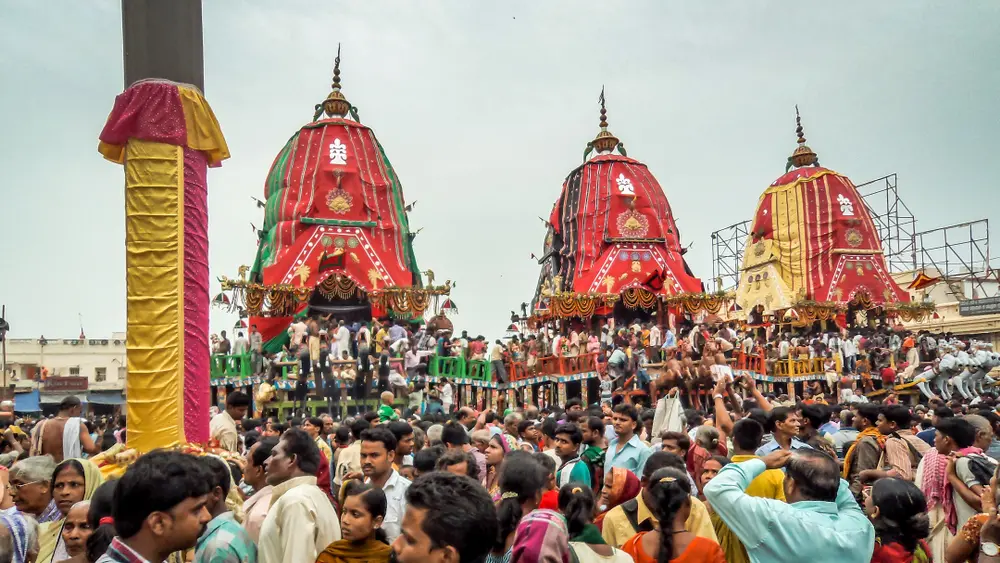
Below is a breakdown of the three iconic chariots used during the Rath Yatra:
Key Details of these Rath:
| Deity | Chariot Name | Color Theme | Height | Number of Wheels | Number of Horses | Charioteer | Symbols Featured |
| Lord Jagannath | Nandighosa | Red & Yellow | ~45 feet | 16 | 4 white horses | Daruka | Chakra (discus), Garuda |
| Balabhadra | Taladhwaja | Red & Blue | ~44 feet | 14 | 4 black horses | Matali | Plough, Palm tree |
| Subhadra | Darpadalana | Red & Black | ~43 feet | 12 | 4 red horses | Arjuna | Lotus flower, Sudarshan |
- Materials Used: Neem wood, phasi rope, and iron nails; no modern tools are used.
- Construction Site: Ratha Khala near the Jagannath Temple.
- Decorations: Each chariot is decorated with painted motifs, silk canopies, and cloth banners bearing auspicious symbols.
- Guardianship: Each chariot has a designated charioteer (saarathi) and is guarded by symbolic weapon bearers and priests.
- Mobility: Chariots are pulled manually using 50-meter-long ropes by thousands of devotees, signifying spiritual involvement.
The symbolic and architectural intricacy of these rathas reflects the larger cosmic chariot of human existence, with the deities guiding devotees through the journey of life and liberation. Witnessing them in motion accompanied by music, chants, and jubilation—is an unmatched spiritual spectacle.
How to Reach Puri
Reaching Puri, Odisha for the Jagannath Rath Yatra 2025 is convenient from almost all parts of India thanks to its well-connected rail, road, and air transport infrastructure. Here is a detailed guide for pilgrims and travelers arriving from across the country:
By Air:
- The nearest airport to Puri is Biju Patnaik International Airport (BBI) in Bhubaneswar, approximately 60 km away.
- Regular flights operate from all major Indian cities such as Delhi, Mumbai, Kolkata, Bengaluru, Hyderabad, and Chennai.
- After reaching Bhubaneswar, you can book a taxi, cab, or take a government/private bus to Puri (approx. 1.5 hours).
- Book flights via trusted platforms:
By Train:
- Puri Railway Station (PURI) is a major terminus on the East Coast Railway zone.
- Direct trains are available from most metro cities including Delhi, Mumbai, Kolkata, Ahmedabad, Hyderabad, and Chennai.
- Popular trains include Puri Express, Konark Express, Jagannath Express, and Neelachal Express.
- Book train tickets only via:
By Road:
- Puri is well-connected via National Highways. You can reach Puri by state-run or private buses from major cities in Odisha like Bhubaneswar, Cuttack, and Sambalpur.
- Private and luxury buses are also available from states like West Bengal, Andhra Pradesh, and Jharkhand.
- Use the following platforms for booking:
By Private Car or Taxi:
- From Bhubaneswar: 60 km via NH316 (~1.5 hours)
- From Cuttack: ~80 km (~2 hours)
- Rental car services such as Savaari or Ola Outstation can be used.
Important Travel Tips:
- During Rath Yatra, Puri experiences heavy traffic diversions and restricted vehicle zones near the temple.
- Plan to arrive at least 1 – 2 days before June 27 to avoid travel delays.
- Use the Jagannath Dham App for route maps and updates.
Whether you’re traveling from nearby districts or from across India, planning your journey in advance and using verified booking platforms will ensure a smooth and spiritually enriching visit to Puri.
Where to Stay & Book for Jagannath Rath Yatra
Puri sees a massive influx of pilgrims during Rath Yatra, so it is strongly advised to book accommodations well in advance. Options range from luxury resorts and hotels to budget lodges and dharamshalas. During the festival, some hotels offer Rath Yatra–specific packages that include temple tours, early check-in, and prasad meals.
Top-Rated Hotels (Verified)
- Hotel TBR – 10/10 rating; sea-view rooms, walking distance to the beach and Jagannath Temple. Book Now
- Hotel Blue Sagar Premium – Spacious rooms with AC, modern amenities, and easy access to Grand Road. Avg. ₹3200/night. Book Now
- Hotel J!K Inn – Budget-friendly option with good hygiene ratings; close to temple. Ideal for solo or small group pilgrims.
- Hotel GPR – Beachfront luxury with pool and on-site restaurant. Excellent for families and group travelers.
Trusted Booking Platforms:
- Booking.com: Filters for proximity to the temple, verified reviews.
- MakeMyTrip: 400+ listings with festival-specific offers.
- Yatra.com: User-friendly cancellation and deals.
- Trip.com: International travelers’ preferred platform.
Dharamshalas & Budget Lodging:
- Jagannath Dharamshala: Basic rooms with shared washrooms; best for spiritual travelers and groups.
- ISKCON Guesthouses: Clean, vegetarian meals and devotional ambiance.
- Mangaldarshan Tour Guest Rooms – Secure rooms within 300 m of temple with balcony views of Rath Yatra. Book Here
Rath Yatra Special Packages:
- Yatra.com: Offers curated pilgrimage packages like Shree Jagannath Darshan (₹17,690 for 2 nights) that include hotel + guided temple visit.
- Mangaldarshan Tour: Premium packages with VIP darshan options, early check-in, and all meals. Explore Packages
Booking Safety Tips:
- Avoid third-party agents or unverified booking links. Use only official websites.
- Odisha Police has warned against fraudulent hotel portals during the festival season. Stick to platforms like Booking.com, Yatra, and MakeMyTrip.
- Double-confirm your booking directly with the hotel before arriving.
For the best experience, choose accommodations near Grand Road or Jagannath Temple for easy access to the main procession. Whether you’re seeking comfort, budget-friendliness, or spiritual ambiance, Puri has something for every devotee.
Local Logistics & Apps
Navigating Puri during the Jagannath Rath Yatra can be both exciting and challenging due to the massive influx of devotees. Here’s how to make your experience seamless and stress-free with the right logistics and tech tools:
Jagannath Dham App
- Developed by the Government of Odisha, this is the official travel and temple management app.
- Features include:
- Live queue updates for darshan and prasad collection.
- Interactive temple maps and GPS navigation.
- Traffic and crowd density alerts.
- Real-time information on chariot pulling schedules.
- Emergency contact access, medical help locations, lost & found, and toilets.
- Download Jagannath Dham App on Google Play
Railways & Crowd Control
- East Coast Railway will operate 365+ special trains from major hubs including Howrah, Secunderabad, and New Delhi.
- Temporary ticket counters, drinking water stations, help desks, and shaded waiting zones are arranged near Puri station.
- RPF and Odisha Police will manage railway crowd flow with drone surveillance, CCTV, and facial recognition tools.
Road Traffic Management
- During the main Rath Yatra days (June 26–28 and July 4–5), Grand Road and surrounding temple zones are strictly no-vehicle zones.
- Public buses will have designated drop-off points ~2 km from the temple.
- Use e-rickshaws or walkways arranged by authorities for last-mile access.
Crowd Navigation & Darshan Zones
- Entry is divided into zones (Blue, Yellow, Red) depending on the crowd control system.
- Volunteer marshals and security personnel guide devotees throughout the route.
- Use designated rope-pulling slots for a safer chariot-pulling experience.
Emergency Services & Help Booths
- Medical booths set up at 50+ strategic locations.
- Drinking water kiosks every 300–500 meters.
- Temporary lost & found counters, police booths, and ambulance bays near Gundicha Temple and Grand Road.
Pro Tips
- Install and regularly check the Jagannath Dham App for updates.
- Follow all signage and police instructions during the Yatra days.
- Travel light, wear breathable clothing, and keep hydration handy.
- Avoid fake guides or unauthorized agents.
With state-backed digital tools, a well-coordinated public infrastructure plan, and vigilant volunteer teams, the Rath Yatra 2025 experience in Puri is designed to be both spiritually fulfilling and logistically secure.
Nearby Attractions While Visiting Jagannath Rath Yatra
Make the most of your spiritual journey to Puri by exploring the many cultural and natural attractions located nearby. These destinations offer a mix of ancient heritage, serene landscapes, and vibrant traditions that enrich the overall pilgrimage experience.
1. Konark Sun Temple (Approx. 36 km from Puri)
A UNESCO World Heritage Site, the Konark Sun Temple is a 13th-century architectural marvel dedicated to the Sun God, Surya. Its massive chariot-shaped structure, intricate stone carvings, and historical significance make it a must-visit for history lovers and spiritual seekers alike.
- Best Time: Early morning or late afternoon
2. Chilika Lake (Approx. 40 km from Puri)
Asia’s largest brackish water lagoon, Chilika Lake is renowned for its migratory bird sanctuary and endangered Irrawaddy dolphins. Take a boat ride from Satapada to explore its scenic beauty, small islands, and rich biodiversity.
- Activity: Dolphin watching tours, bird photography
3. Dhauli Hills (Approx. 55 km from Puri)
Famous for its Shanti Stupa (Peace Pagoda), Dhauli is believed to be the battlefield where Emperor Ashoka embraced Buddhism. The site features rock edicts, monasteries, and a calm spiritual ambiance ideal for reflection.
- Highlight: Ashokan Rock Edicts
4. Raghurajpur Heritage Crafts Village (Approx. 15 km from Puri)
A living museum of Odisha’s traditional art, Raghurajpur is home to skilled artisans who create Pattachitra paintings, palm leaf engravings, and wooden toys. Every home here is a studio, making it a vibrant and culturally immersive experience.
- Must-Do: Buy original Pattachitra art and watch live demonstrations
5. Bhubaneswar – Temple City of India (Approx. 60 km from Puri)
The capital of Odisha, Bhubaneswar is dotted with over 700 temples showcasing Kalinga architecture. Notable ones include Lingaraj Temple, Mukteswara Temple, and Rajarani Temple.
- Cultural Tip: Explore tribal museums and street food hubs
These nearby attractions add layers of spiritual, historical, and cultural richness to your Rath Yatra journey, making it a well-rounded and memorable pilgrimage.
Final Thoughts
The Jagannath Rath Yatra 2025 is not just a festival it’s a spiritual phenomenon that unites millions through devotion, tradition, and cultural celebration. From the vibrant chariot procession and sacred rituals to the rhythmic chants and mass participation, this yatra represents the very heart of India’s spiritual heritage.
As one of the largest religious gatherings in the world, the Rath Yatra allows devotees of all backgrounds to witness the divine journey of Lord Jagannath, Balabhadra, and Subhadra. Whether you’re pulling the chariots, watching the deities in their golden Suna Besha, or soaking in the atmosphere of Grand Road in Puri, each moment is steeped in meaning and transcendence.
With this detailed guide, you now have everything you need to plan your Jagannath Rath Yatra trip – from important dates and rituals to travel logistics, accommodations, nearby attractions, and safety tips. Be sure to book early, stay informed through official apps, and immerse yourself fully in the spirit of this divine journey.
Let your pilgrimage to Puri Rath Yatra 2025 be not just a visit, but a transformative experience an opportunity to reconnect with India’s ancient wisdom, shared faith, and unmatched devotion.
Book now, plan smart, and let the divine journey transform your soul.

